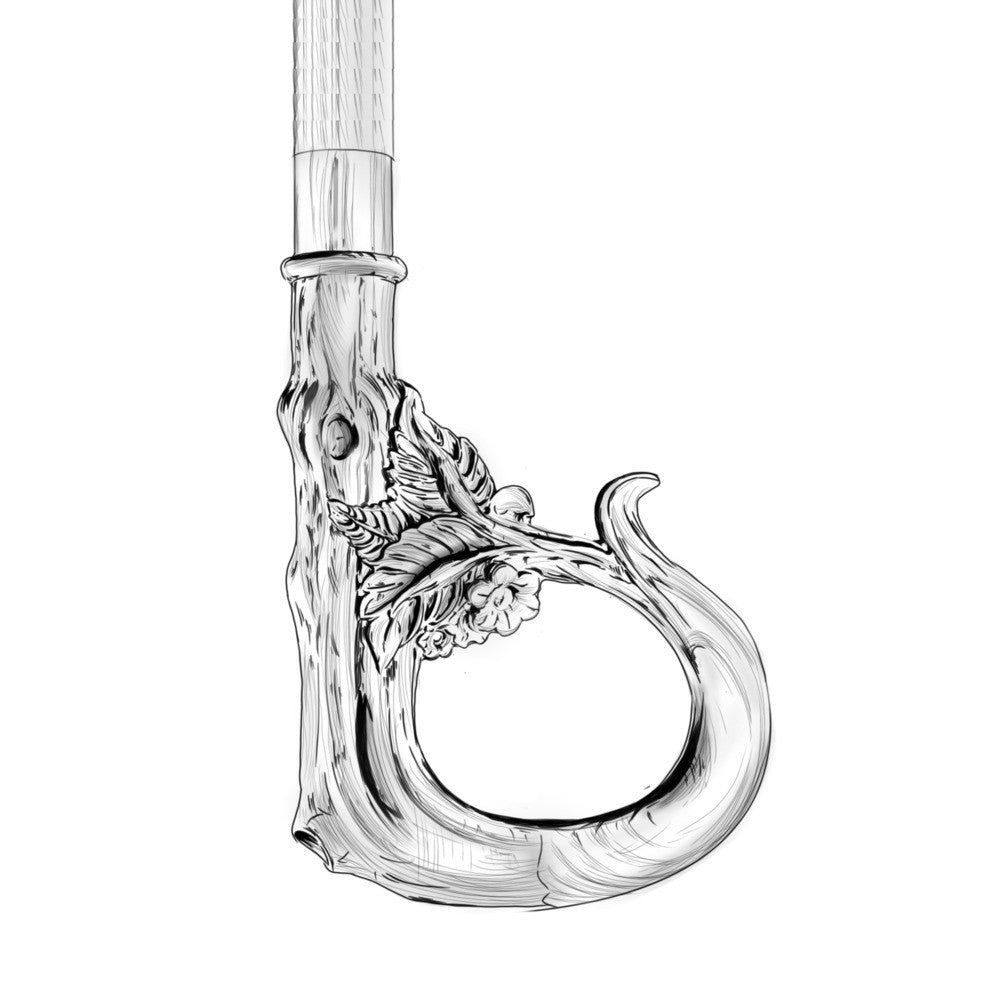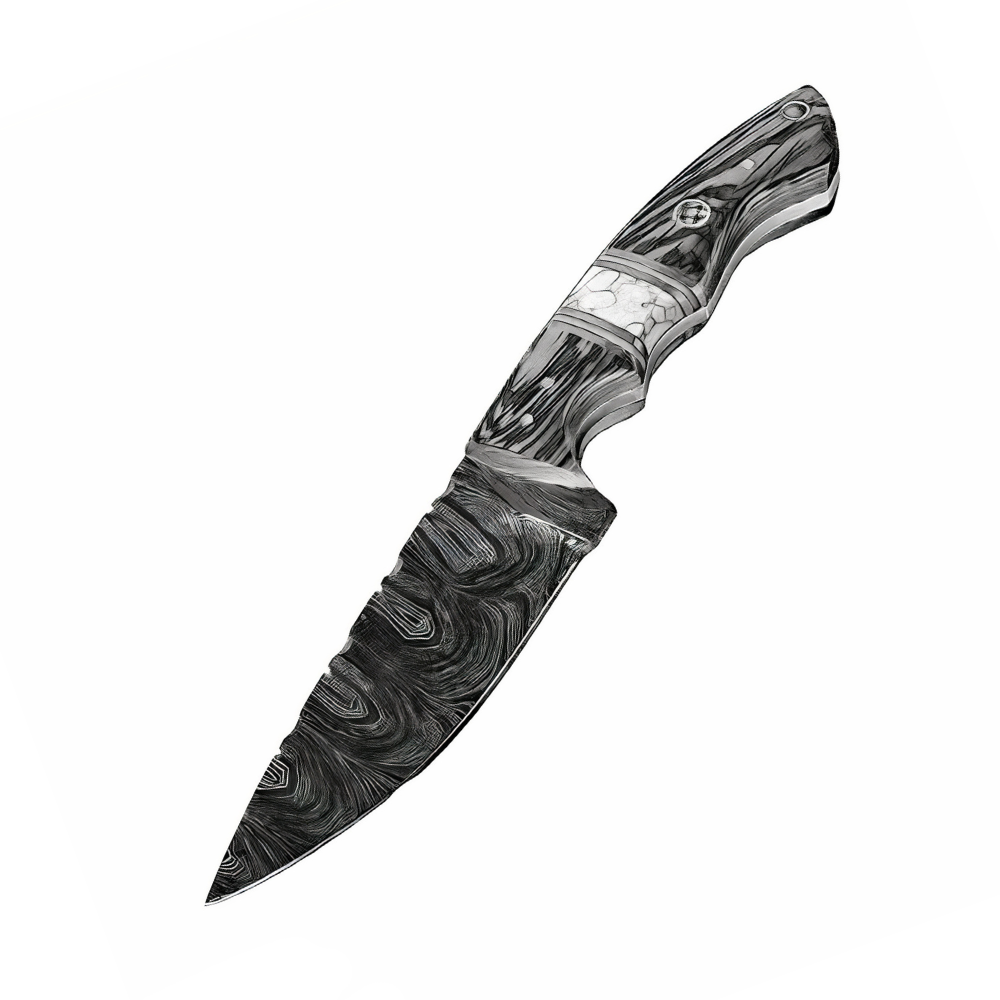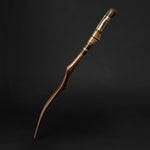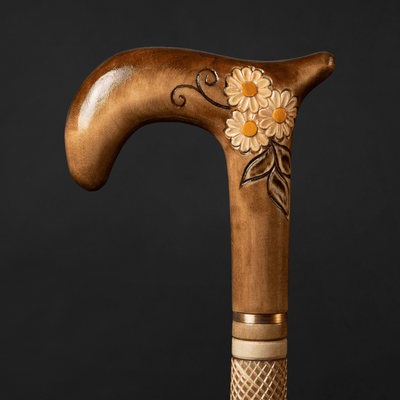You have no items in your shopping cart.
Recent Posts
-
How an Ergonomic Walking Cane Handle Prevents Hand and Wrist Strain?
-
How to Walk With a Cane Correctly to Avoid Back or Shoulder Strain?
-
5 Common Mistakes People Make When Buying a Walking Cane (and How to Avoid Them)
-
How to Choose a Walking Cane That Reflects Your Personality (Not Just Your Needs)?
-
Walking Canes That Match Formalwear for Weddings and Events
-
Why Walking Canes Are the New Fashion Statement?
MOST POPULAR NOW
27
Apr
Golf is an elegant sport that requires a combination of skill, technique, and the right equipment. While most golfers focus on getting the perfect club, they often overlook the importance of using a walking stick during their game. Walking sticks are not only stylish but also serve a vital purpose in golf. In this article, we will explore the role of walking sticks in golf and why using a walking stick can improve your game. We will also discuss the importance of proper technique when using a walking stick on the golf course.
How to use your walking stick to improve your golf game?
The history of walking sticks in golf
Walking sticks have been used in golf for centuries. They were originally used as a way for golfers to navigate through rough terrain and provide support when walking long distances. Over time, walking sticks became a fashion statement, and many golfers started to use them as a symbol of status and elegance.
Today, walking sticks have evolved to become a practical accessory for golfers of all levels. They are designed to provide stability and support during play and are essential for golfers who want to improve their game.

Why use a walking stick in golf?
Using a walking stick in golf can have many benefits. The primary benefit is that it provides support and stability, which can help golfers maintain their balance during their swing. A walking stick can also help to reduce fatigue, which is essential for golfers who want to perform at their best for the entire game.
Walking sticks are also useful for golfers who have difficulty walking long distances. They can provide support and reduce the strain on the legs, allowing golfers to conserve their energy and focus on their game. This is particularly important for older golfers who may have mobility issues.
The importance of proper technique
While using a walking stick can have many benefits, it is important to use it correctly. The correct technique for using a walking stick in golf is to hold it in the opposite hand to the side of your body where you are holding your club. For example, if you are holding your club with your right hand, you should hold your walking stick in your left hand.
It is also important to hold the walking stick correctly. You should grip the handle firmly and keep your arm close to your body. This will provide stability and support during your swing.
In conclusion, using a walking stick in golf can have many benefits. It can provide support, reduce fatigue, and help golfers maintain their balance during their swing. However, it is important to use a walking stick correctly to get the most benefit from it. By following the correct technique, golfers can improve their game and enjoy all the benefits that come with using a walking stick.
Understanding walking sticks
Walking sticks are a common sight on golf courses these days, and for good reason. They provide golfers with support, stability, and reduce fatigue during play. However, not all walking sticks are created equal. In this article, we will explore the different types of walking sticks for golf, how to choose the right one for you, and the benefits of using a walking stick in golf.
Types of walking sticks for golf
There are several types of walking sticks available for golfers, each with its own unique features and benefits. Some of the most popular types include:
-
Classic walking stick - A classic walking stick is the most common type of walking stick used in golf. It is made from wood or metal and is usually designed with a curved handle for comfort and grip.
-
Folding walking stick - A folding walking stick is designed for golfers who are always on the go. It can be easily folded and stored in a golf bag, making it a convenient option for golfers who want to travel light.
-
Telescoping walking stick - A telescoping walking stick is a collapsible walking stick that can be extended or retracted to suit the height of the user. It is an ideal option for golfers who want a walking stick that is adjustable and versatile.
-
Quad walking stick - A quad walking stick is a walking stick with four legs, designed for maximum stability and support. It is an excellent option for golfers who require extra support during play.
How to choose the right walking stick for you?
Choosing the right walking stick for you is essential if you want to get the most benefit from it. Here are some factors to consider when choosing a walking stick for golf:
-
Height - The height of the walking stick should be appropriate for your height. A walking stick that is too short or too long can cause discomfort and affect your swing.
-
Material - The material of the walking stick is also important. Wooden walking sticks are lightweight and stylish, while metal walking sticks are more durable and weather-resistant.
-
Handle - The handle of the walking stick should be comfortable and easy to grip. Rubber or foam handles are ideal as they provide a good grip and reduce fatigue.
-
Weight - The weight of the walking stick should be light enough to carry around the golf course without causing fatigue.
Benefits of using a walking stick in golf
Using a walking stick in golf can have many benefits, including:
-
Stability - A walking stick can provide stability and support during play, reducing the risk of falls and injuries.
-
Reduce fatigue - A walking stick can help to reduce fatigue by distributing the weight evenly across the body, allowing golfers to conserve their energy and focus on their game.
-
Improve balance - A walking stick can help to improve balance during the swing, resulting in a better shot.
-
Mobility - A walking stick can improve mobility for golfers who have difficulty walking long distances or have mobility issues.
In conclusion, choosing the right walking stick for golf can make a significant difference in your game. By understanding the different types of walking sticks available and considering the factors mentioned above, you can choose a walking stick that is comfortable, stylish, and provides maximum support and stability during play. So, if you haven't already, consider adding a walking stick to your golfing equipment and enjoy all the benefits that come with using one.
Preparing to use a walking stick in golf
If you are considering using a walking stick in golf, it is important to take the time to properly prepare your body for the new equipment. Here are some tips for getting started:
-
Choose the right walking stick: Before you start using a walking stick in golf, make sure you have chosen the right one for your body. A walking stick should be the correct length for your height and should have a comfortable grip. Make sure to try out different styles and materials to find the one that works best for you.
-
Warm-up exercises: Just like any other sport, it is important to warm up your body before using a walking stick in golf. Start with some light cardio exercises to get your heart rate up and increase blood flow to your muscles. You can also incorporate dynamic stretching exercises to get your body ready for the movements you will be making during your round of golf.
-
Stretching techniques: In addition to warming up, it is important to incorporate stretching techniques to prevent injury. Focus on stretching your upper body, including your arms, shoulders, and back, as well as your lower body, including your legs and hips. Hold each stretch for at least 30 seconds and remember to breathe deeply throughout.
By taking the time to properly prepare your body for using a walking stick in golf, you can help prevent injury and ensure a more enjoyable round of golf.

Techniques for using a walking stick in golf
Using a walking stick in golf can provide a number of benefits, including improved balance, stability, and control. Here are some techniques to help you make the most of your walking stick on the golf course:
-
Correct grip and hand placement: The first step to using a walking stick in golf is to master the correct grip and hand placement. The grip should be firm but not too tight, and the hands should be placed in a comfortable position on the handle. Avoid gripping too tightly, as this can cause tension in your hands and arms.
-
Proper swing and follow-through: Once you have the correct grip and hand placement, it is important to focus on your swing and follow-through. Your swing should be smooth and controlled, with the walking stick serving as an extension of your arm. Remember to keep your eyes on the ball and follow through with your swing to maximize power and accuracy.
-
Improving balance and stability: One of the key benefits of using a walking stick in golf is improved balance and stability. To make the most of this benefit, focus on using your walking stick to support your body throughout your swing. Use the stick to help you maintain your balance during your backswing, and then use it to help you shift your weight forward during your downswing and follow-through.
By mastering these techniques for using a walking stick in golf, you can improve your game and enjoy a more comfortable and stable round of golf.
Practicing with a walking stick
If you have decided to incorporate a walking stick into your golf game, it is important to practice effectively in order to improve your skills. Here are some tips for effective practice sessions, as well as some drills to help you improve your game:
-
Tips for effective practice sessions: To make the most of your practice sessions, start by setting specific goals for each session. Focus on one or two areas of your game that you want to improve, such as accuracy or distance. Be sure to warm up properly before you begin, and take breaks as needed to avoid fatigue or injury.
-
Drills to improve your game: There are a number of drills you can use to improve your golf game with a walking stick. One effective drill is to practice your swing in slow motion, focusing on your grip, stance, and posture. Another drill is to practice hitting the ball from a variety of lies and positions, such as uphill, downhill, or on a slope.
-
Measuring your progress: To track your progress over time, it is important to measure your performance regularly. Keep track of your scores, distances, and accuracy, and compare them to your goals and previous results. This will help you identify areas where you need to improve, as well as areas where you are making progress.
By following these tips and practicing regularly with a walking stick, you can improve your golf game and enjoy greater confidence and success on the course.
Incorporating walking sticks into your golf routine
If you have decided to incorporate a walking stick into your regular golf game, there are some tips and techniques you can use to help you get the most out of your new equipment. Here are some things to keep in mind:
-
How to integrate a walking stick into your regular golf game: To start using a walking stick in your regular golf game, it is important to first become comfortable with the stick and develop a consistent swing. Begin by practicing with the walking stick on the driving range or during practice rounds. Once you feel comfortable with the stick, you can start using it on the course during regular play.
-
Using a walking stick for different types of shots: Walking sticks can be used for a variety of shots on the golf course, including tee shots, fairway shots, and chip shots. When using a walking stick, it is important to adjust your grip and stance to accommodate the extra length and weight of the stick. For tee shots, you may need to tee the ball higher to compensate for the added height of the stick.
-
Adjusting your swing with a walking stick: When using a walking stick, it is important to adjust your swing to accommodate the added weight and length of the stick. This may require a slower swing or a slightly different angle of attack. Take time to experiment with your swing and find the right technique for using the walking stick effectively.
By incorporating these tips and techniques into your golf game, you can successfully integrate a walking stick into your regular routine and enjoy the added benefits it provides. Whether you are looking to improve your accuracy, stability, or overall performance, a walking stick can be a valuable tool for any golfer.
Advanced techniques for using a walking stick in golf
If you are looking to take your golf game to the next level, incorporating a walking stick into your routine can be a great way to achieve more power, accuracy, and distance. Here are some advanced techniques for using a walking stick in golf:
-
Using a walking stick for more power and distance: By incorporating a walking stick into your swing, you can create more leverage and generate additional power and distance. To achieve this, grip the walking stick with both hands, place it behind your back, and make a practice swing. Then, take your regular stance and swing the club with the walking stick in place. The added weight and length of the stick will help you generate more power and distance on your shots.
-
Incorporating a walking stick into your putting game: Walking sticks can also be used for putting, as they can help you maintain a stable stance and improve your accuracy. To use a walking stick for putting, place the stick behind your feet and perpendicular to your target line. This will help you maintain a straight line and ensure that your putting stroke stays on target.
-
How to use a walking stick for recovery shots: When you find yourself in a difficult lie, such as in the rough or behind a tree, a walking stick can be a useful tool for getting out of trouble. Grip the walking stick with both hands and position it behind your back. Then, use a modified swing to chip the ball out of trouble and back onto the fairway.
By incorporating these advanced techniques into your golf game, you can get more out of your walking stick and improve your performance on the course. With practice and dedication, you can master these techniques and take your golf game to new heights.
Care and maintenance of walking sticks
Walking sticks can be a valuable asset to any golfer's game, but like any other piece of equipment, they require proper care and maintenance to perform at their best. Here are some tips for caring for your walking stick and ensuring it lasts for many rounds to come.
Proper care and cleaning
To keep your walking stick in good condition, it's important to clean it regularly. After each round, wipe down the stick with a damp cloth to remove any dirt or debris that may have accumulated on the shaft or grip. For a deeper clean, you can use a mild soap and water solution, but be sure to dry the stick thoroughly before storing it.
Storage tips
When not in use, it's important to store your walking stick properly to prevent damage. Avoid leaving it in direct sunlight or in a damp environment, as this can cause the wood to warp or crack over time. Instead, store your stick in a cool, dry place, ideally in a protective carrying case.
When to replace your walking stick?
While walking sticks can last for many years with proper care, eventually they may need to be replaced. Signs that it's time for a new walking stick include cracks or splits in the wood, a loose or worn grip, or a bent shaft that affects the stick's balance. If you notice any of these issues, it's best to replace your walking stick before it becomes a hazard on the course.
In summary, proper care and maintenance of your walking stick can help extend its lifespan and keep it performing at its best on the golf course. By cleaning it regularly, storing it properly, and replacing it when necessary, you can enjoy the benefits of using a walking stick for many rounds to come.
Other ways to improve your golf game
Golf is a sport that requires a combination of physical skill, mental focus, and strategy. While incorporating a walking stick into your game can certainly improve your performance, there are other ways to enhance your golf game and overall fitness.
Here are some additional tips and tricks to help you improve your golf game:
-
Stay consistent with your routine: Developing a consistent routine for each shot can help you maintain focus and consistency throughout your game. This includes things like setting up your stance and grip, visualizing the shot, and taking a deep breath before swinging.
-
Practice regularly: Practicing on a regular basis can help you refine your skills and develop muscle memory. This can lead to better accuracy, power, and control on the course. Consider practicing at a driving range, taking lessons from a golf professional, or playing rounds with friends.
-
Improve your mental game: Golf requires a great deal of mental focus and concentration. Techniques like visualization, positive self-talk, and mindfulness meditation can help you stay focused and relaxed on the course. You can also work on managing your emotions and avoiding frustration when you make mistakes.
-
Stay in good physical shape: Golf requires a combination of strength, flexibility, and endurance. Engaging in regular exercise, particularly cardiovascular and strength training, can help you stay in top physical condition for golf. Stretching before and after your rounds can also help prevent injury and improve your flexibility.
-
Pay attention to your nutrition: Eating a healthy, well-balanced diet can also help improve your golf game. Fueling your body with nutrient-dense foods can help you maintain energy and focus on the course. Be sure to stay hydrated by drinking plenty of water and electrolyte-rich beverages.
Incorporating these tips into your golf routine, in addition to using a walking stick, can help you improve your game and achieve better overall fitness. Remember to always prioritize proper technique, consistency, and self-care to reach your golfing goals.
In conclusion, using a walking stick in golf can offer numerous benefits, including improved balance, stability, and control. Walking sticks can also provide support during long rounds and can help alleviate pain or discomfort in the lower body. In this article, we have covered the different types of walking sticks available, how to choose the right one for you, and the proper techniques for using them in your golf game.
We also discussed the importance of proper warm-up exercises and stretching techniques to prevent injury, as well as tips for effective practice sessions and drills to improve your game. Additionally, we covered how to incorporate a walking stick into your regular golf routine, including using them for different types of shots and adjusting your swing accordingly.
For those looking to take their golf game to the next level, we also touched on advanced techniques, such as using a walking stick for more power and distance, incorporating them into your putting game, and using them for recovery shots.
Finally, we discussed the care and maintenance of your walking stick, including proper cleaning and storage techniques, as well as when it may be time to replace your stick. We also offered additional tips and tricks for improving your golf game, including techniques to improve your mental game and how to maintain proper fitness for golf.
Overall, incorporating a walking stick into your golf game can be a game-changer, offering a wide range of benefits for players of all levels. By following the tips and techniques outlined in this article, you can improve your balance, stability, and control on the course, leading to a better overall golf experience.
FAQs
If you're considering using a walking stick in your golf game, you may have some questions about the process. Here are some answers to common questions about walking sticks in golf:
Q: What is the best type of walking stick for golf? A: The best type of walking stick for golf will depend on your individual needs and preferences. Some golfers prefer adjustable walking sticks that can be tailored to their specific height and swing, while others prefer fixed-length sticks that are lightweight and easy to handle. It's also important to consider the type of terrain you'll be playing on, as well as the conditions you'll be playing in, when choosing a walking stick for golf.
Q: Can using a walking stick improve my swing? A: Yes, using a walking stick can improve your swing by providing added stability and balance. Walking sticks can help golfers maintain their posture throughout the swing, and can also help reduce the risk of injury by promoting proper body alignment.
Q: Is it safe to use a walking stick while playing golf? A: Yes, using a walking stick while playing golf is generally safe, as long as the stick is used properly and is in good condition. It's important to choose a walking stick that is the correct length for your height, and to make sure that the stick is in good working condition before using it on the golf course.
Q: How do I know if my walking stick needs to be replaced? A: You should replace your walking stick if it becomes damaged or shows signs of wear and tear, such as cracks or splinters. It's also a good idea to replace your walking stick if you notice that it's no longer providing the level of support and stability that you need on the golf course.
Using a walking stick in golf can be a great way to improve your game and reduce your risk of injury. If you're interested in trying out a walking stick for golf, be sure to choose a stick that is appropriate for your needs and practice proper techniques to ensure a safe and effective game.
Also Purchased
-
Beige Walking Cane for Ladies Chamomile Flower, Wooden Walking Stick
Introducing our beautiful Beige Walking Cane for Ladies with Chamomile Flower, a Wooden Walking Stick that is hand carved and handmade, making it both pretty and unique. This walking cane...$90.00$79.50 -
Exotic Burl Wood Walking Cane – Fashionable Artisan Stick
A sculptural statement in deep, oceanic blue — this walking cane is more than a support accessory, it's wearable art. Meticulously hand-shaped from stabilized burl wood, the handle evokes the...$425.00 -
ArtWalkingSticks™ MAGIC Red Walking Cane - Unisex, Handmade
This piece of art is created for those who value details. We make one of a kind, handcrafted wood and resin canes. Our Wooden Canes are completely unmatched in creativity....$425.00 -
Fashionable Lion Shoehorn Long Handle, Pearly Brown Shaft, Handmade
Introducing our Fashionable Lion Shoehorn, a handcrafted, long-handled shoe horn with a pearly brown shaft that's both stylish and practical. The intricate Lion design adds a touch of elegance to...$240.00 -
Carved Lion Head Comfortable Walking Cane, Unusual Crazy Walking Stick
Want to add a touch of royalty to your style? Look no further than our carved lion walking cane. People have used decorative lions in décor since ancient times, and...$182.00 -
Stylish Walking Cane For Man and Women, Natural Wood Canes, Designer
In order to make this stylish walking cane we used world color tendencies. This piece of art is created for those who value details. We make one of a kind, handcrafted...$430.00
































